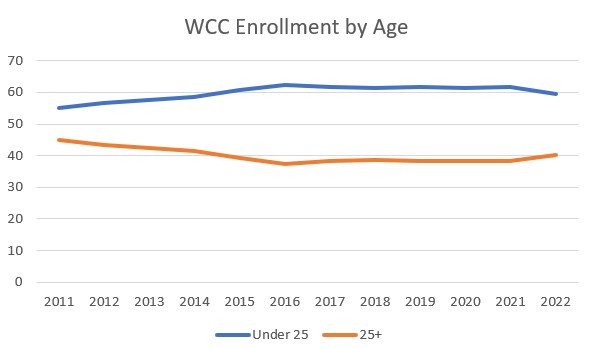Yesterday, I wrote about community college education in Michigan, and which degree programs attract the majority of students. Today, I will look at the relative success of our approach to community college education, and the result of inattention to its shortcomings.
The elephant in the community college’s living room is that among students who enrolled in classes for the first time in the Fall 2016 semester, 45.4% of them are no longer enrolled anywhere and did not complete a degree. Despite their lower cost and higher flexibility, community colleges are by no means a solid path to higher education.
So, the positioning of community colleges as a first step toward a four-year degree has done little to help students realize their educational goals. Statistically, graduating from a community college appears to be a liability for most students who hope to pursue a four-year degree. Additionally, community colleges have had only limited success in graduating students at all.
Community colleges have done little to rehabilitate their image or improve their competitive position. In fact, most community college administrators do not seem to acknowledge that they are competing for students, or that their survival depends on their ability to compete effectively.
Would-be students have a raft of employment options that don’t require enrolling in a community college. Most of those options will enable them to enjoy at least as much economic success as attending a two-year school will minus the expenditures of money and time that a community college degree requires.
Community colleges aren’t competing
According to ZipRecruiter, most Michigan high school graduate salaries fall between $27,662 (25th percentile) and $44,786 (75th percentile). Most Michigan associate degree salaries fall between $29,857 (25th percentile) and $47,421 (75th percentile). An associate degree is currently worth between $1.05 and $1.27 more per hour than a high school diploma.
That’s it.
On earnings alone, a community college degree is not worth pursuing. And for most students, a community college degree is not a steppingstone to a bachelor’s degree, despite the marketing that may suggest otherwise. It’s not impossible to “get there from here,” It’s just highly unlikely.

As the chart shows, students under the age of 25 make up most students enrolled at WCC. Beginning in 2010-11, the percentage of students over the age of 25 began to decline from about 45% to a low of 37.5% in 2015-16. From 2016-17 to 2020-21, the percentage of students over the age of 25 remained relatively constant at about 38%. In 2021-22, that increased to 40%, most likely due to the impact of Michigan Reconnect.
Following the Great Recession, a decreasing percentage of adult learners in Washtenaw County found WCC to be a viable pathway to a new (or better) job. People above the age of 25 are more likely to have dependents, so a job with a salary in the mid-30’s will not generate enough income to support a multiple-person, single-income household.
The increase in 2021-22 indicates that adult learners may opt to enroll at WCC only when their own money is not at risk. Further, the 2021-22 data may indicate that fewer young adult learners see WCC as a viable educational option.
Tomorrow, I will look at potential solutions, and what’s required to restore value to a community college degree.
Photo Credit: Ervins Strauhmanis, via Flickr



















